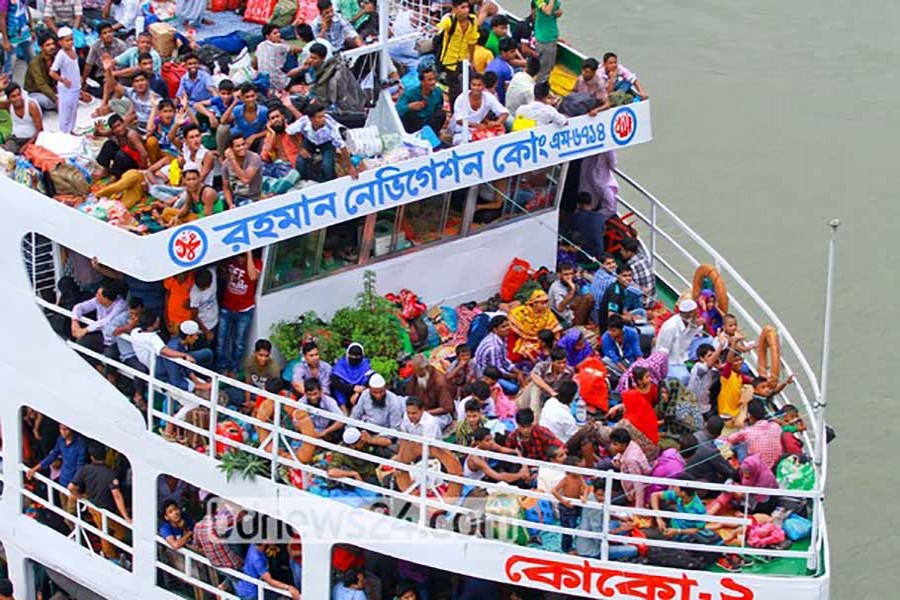
Published :
Updated :

Millions, who would soon start departing for home on the occasion of Eid-ul-fitr, would have loved to put faith in the assurances of the roads and transport minister about supportive measures for making this year's Eid-journey 'comfortable'. But the bitter experiences of recent years and the current state of roads and highways, as reported in the media, do not encourage them to expect anything better than that of the yester years. The home-bound journey during Eid festivals in recent years remained quite perilous. Commuters do usually face lots of troubles both before and during the journey. Procuring tickets of all types of transports, especially of trains and buses, is hell of a job. Most people do count an extra amount for buying tickets from the black market. But remaining stuck-up for eight to ten hours in traffic gridlocks due to bad road conditions or inadequate ferrying facilities is considered to be the most troubled part of Eid-journey.
None would expect the journey to be entirely trouble-free, for people in their thousands move from one place to another on one single occasion. But home-goers do find it particularly very difficult to bear with the suffering that they face while remaining stranded in unusually long tailbacks on highways in hot and humid conditions. The duration of the wait ranges between six and twelve hours, depending on the length of the tailbacks. The roads and highways minister have assured all concerned that there would be no tailbacks on highways. This, as he stated, would be so, because of the ongoing repair and maintenance programme. Only heavy rain, the minister was reported to have said, might 'slow down' the speed of the vehicles. But the fact remains that early rain is already hampering the construction and repair work of roads and highways.
There is no denying that the government has been engaged in the work of improving the conditions of roads and highways at a huge cost. Such improvements are otherwise purported to lessening the sufferings of the road users, particularly more so during the major religious festivals like Eid-ul-fitr and Eid-ul-Azha. The benefits of the cherished improvements, however, get diluted due to poor traffic management and propensity among a section of road users not to obey traffic laws and rules. Faulty road conditions, coupled with lack of discipline in traffic movement, do give rise to an unbearable situation on highways even during normal time. The condition becomes worse on the eve of Eid festivals when number of vehicles on roads and highways increases manifold.
Overall, the situation during the upcoming Eid is likely to be no different from those on earlier such occasions. But a few appropriate measures can help make the life of the Eid-goers a little easy. On this count, it will be an important task on the part of the relevant agencies to remove all obstacles to free movement of vehicles through roads and highways. To make that happen, the repair and construction work needs to be kept suspended for a week, ahead of next Eid. Similarly, restrictions on the movement of trucks and three-wheelers should be imposed some days before the largest religious festival of the Muslims. What is, however, considered most important is disciplining the vehicular movement. The authorities will have to deploy a large number of law enforcers on important roads and highways to help ensure that vehicles do not overtake or indulge in other irregularities.


 For all latest news, follow The Financial Express Google News channel.
For all latest news, follow The Financial Express Google News channel.